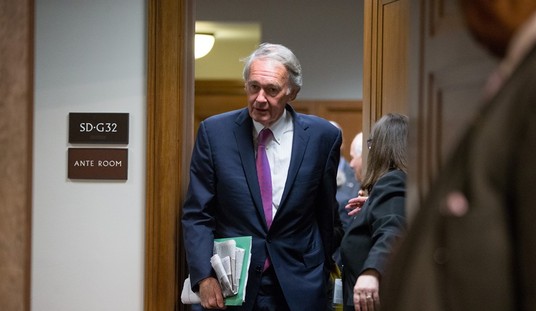For supporters of limited government, there is some good news coming from Washington. On entitlement spending, House Budget Committee Chairman Paul Ryan’s new spending plan would reform Medicare and Medicaid, repeal Obamacare, and balance the budget over 10 years.
And on the discretionary side of the federal budget, the recent sequester will, in theory, trim about $1 trillion from projected spending over the next decade, and that comes on top of similar-sized cuts from the budget caps enacted in 2011. Those cuts are only a fraction of the nearly $50 trillion that the federal government is expected to spend over the next 10 years, but they are a start.
Some people are complaining that the sequester is too broad-based, and that it would have been better to target just the most wasteful programs. But members of Congress don’t agree on which programs are wasteful. Republicans point to costly welfare programs such as food stamps, while Democrats point to the bloated Pentagon bureaucracy. Given this disagreement, an across-the-board sequester was the best way to make progress on cuts this year.
Looking ahead, some policymakers think that no further cuts are needed because the sequester, budget caps, and recent tax hikes reduced projected deficits. But that view is short-sighted. Even if the sequester and budget caps hold, Congressional Budget Office (CBO) projections show that deficits will start rising again after 2015, as the Social Security, Medicare and Medicaid juggernauts keep on growing. Federal spending and debt are expected to rise even faster during the 2020s.
Recommended
The CBO outlook is scary, but the budget situation is even worse than the long-term CBO baseline shows. That’s because the baseline doesn’t take into account the negative effects of the expanding government on the economy. If spending, taxes and debt keep rising, the growth in gross domestic product will fall, which in turn will cause the ratios of those items to GDP to rise even faster. America will descend into a fiscal death spiral.
Also missing from baseline projections is any new spending that Congress may add in coming years. Another recession would create demands for more “stimulus.” A new military conflict would push up the defense budget. And, as we’ve seen with Hurricane Sandy, every natural disaster quickly becomes a federal budget disaster.
Policymakers shouldn’t be lulled into complacency now that the deficit is finally falling after years of $1 trillion budget holes. The relentless growth in entitlements and the tendency of politicians to add new programs will keep the red ink gushing unless Congress proactively looks for places to cut every year.
House Republicans get credit for supporting the discretionary spending caps and sticking with the sequester cuts so far. But those limited successes could be overturned as appropriators in both parties will probably try to reverse the cuts and bust the budget caps in coming years.
A better way to create lasting savings is to restructure entitlements and cut promised benefits. The 1983 law that increased the Social Security retirement age, for example, created ongoing savings that haven’t been reversed. Paul Ryan’s proposed shift to a more consumer-based Medicare and the block-granting of Medicaid would also generate large and long-lasting savings if passed.
Another good way to generate lasting budget savings is to terminate entire programs and agencies. Unfortunately, Republicans have not pursued such reforms in years.
Yet there are many large programs that are wasteful, inefficient, or would be better handled by state governments. Some good prospects for termination — with the rough annual savings — are farm subsidies ($22 billion), energy subsidies ($17 billion), public housing ($7 billion), community development ($14 billion), and K-12 education programs ($56 billion). That’s $116 billion in annual savings right there, or well over $1 trillion during the coming decade.
Other federal activities should be privatized, including the Postal Service, air traffic control, and Amtrak. Privatization would not only create budget savings, it would also boost the economy as the productivity of these services increased.
Such reforms may sound radical to U.S. policymakers, but they have been implemented successfully in numerous other countries. For example, New Zealand ended its farm subsidies, Germany privatized its post office, and Canada privatized its air traffic control.
Fiscal conservatives in Congress need to start making the case for such reforms. The Obama administration will probably resist major changes, but the initial goal should be to start a national debate on these issues. The successful welfare reform of 1996 did not just happen: it came about only after conservatives, libertarians, and elected Republicans hammered home arguments about welfare’s failings for many years.
To make further progress on budget reforms today, we need leaders in Congress who will begin hammering home the failings of dozens of other major programs and agencies.
This article appeared in Daily Caller

























Join the conversation as a VIP Member